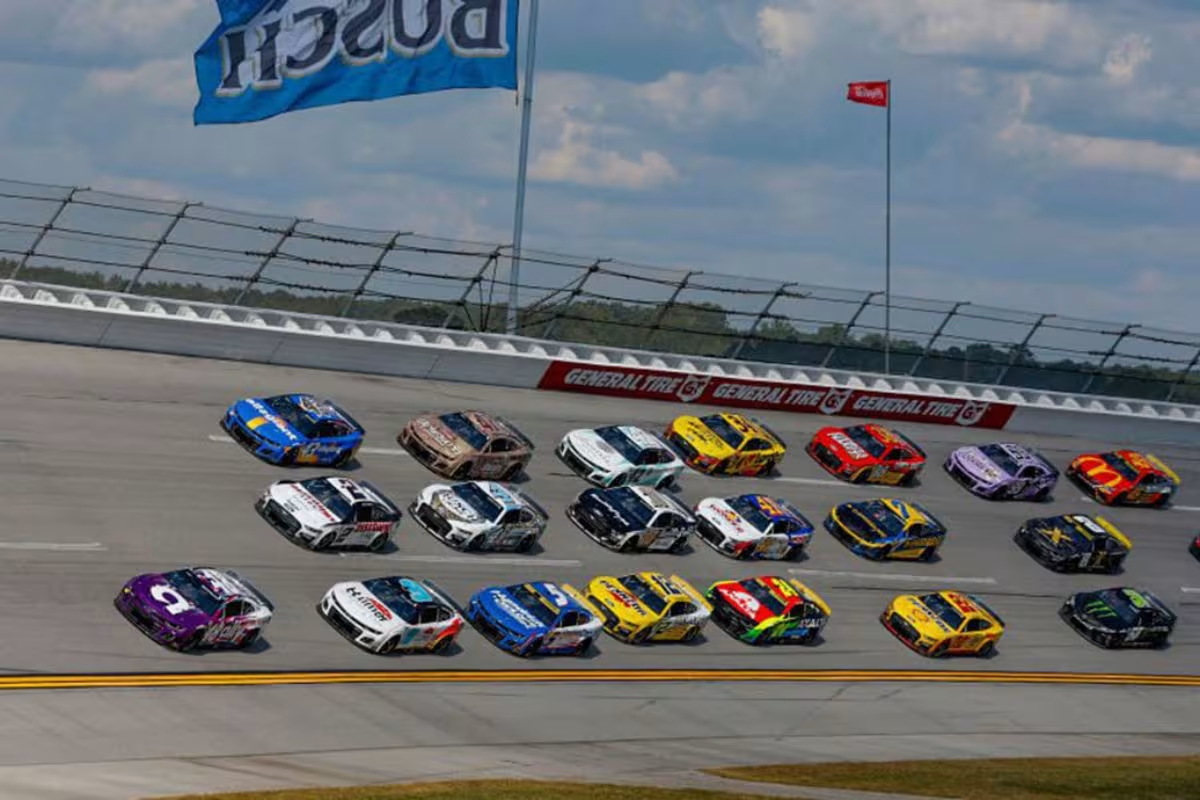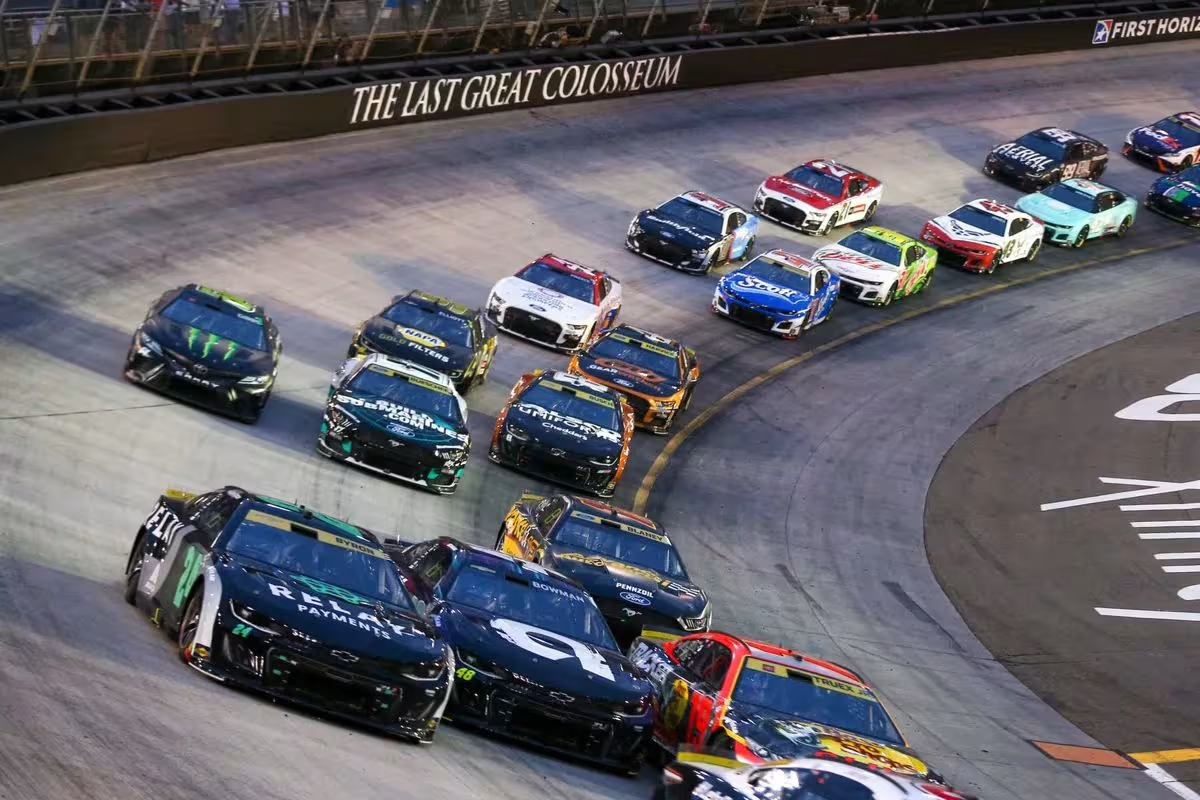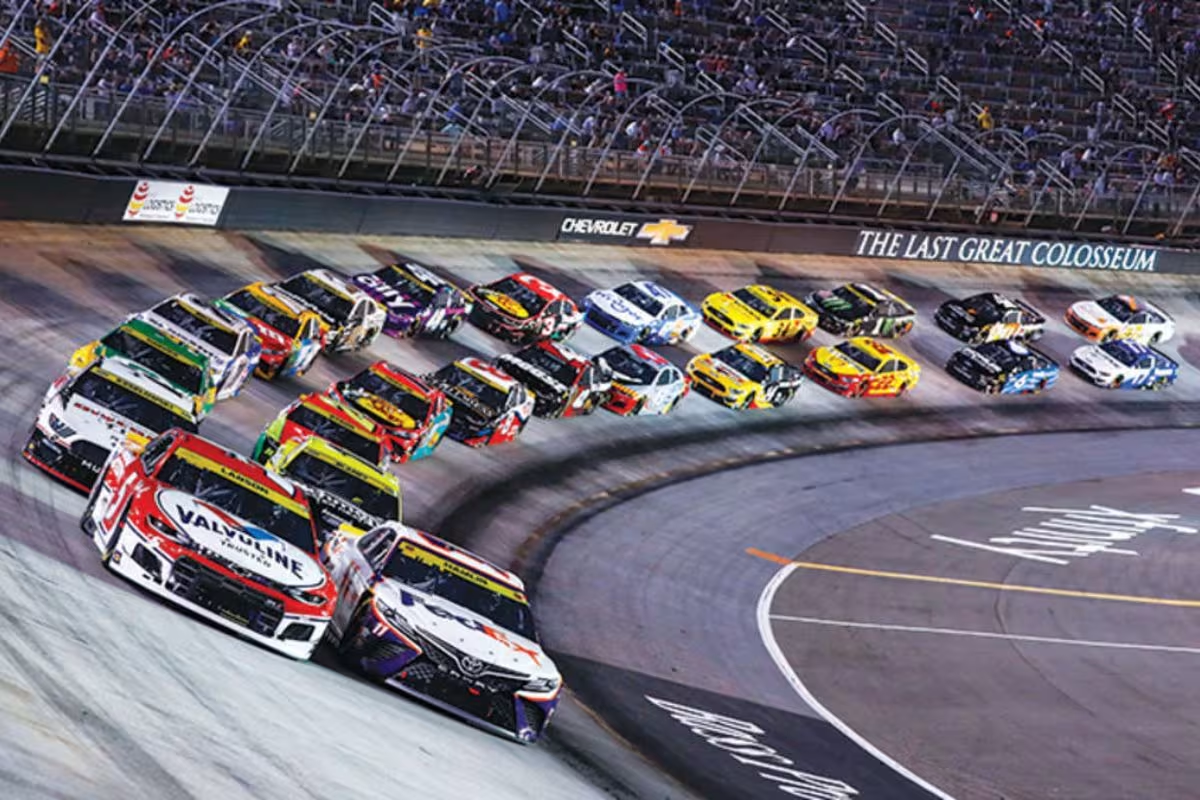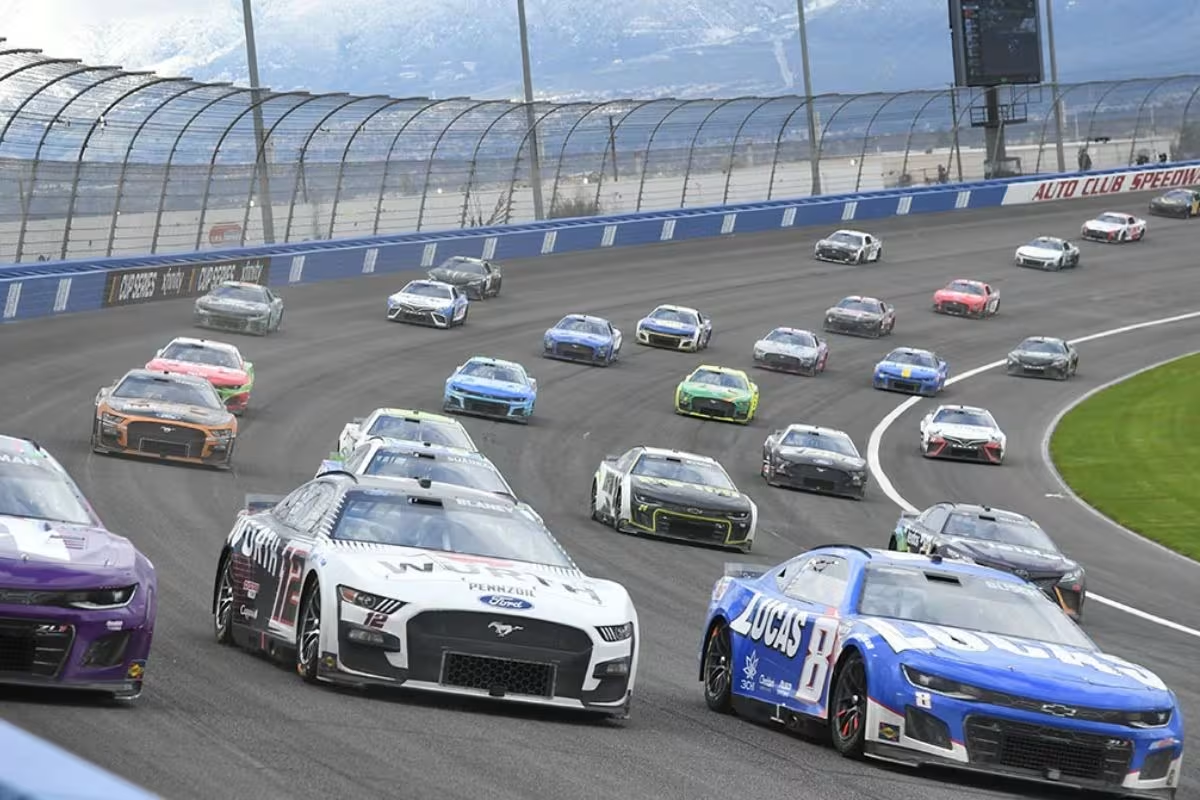NASCAR’s Next-Gen Fix: The recent proposals from NASCAR’s leading crew chief have sparked considerable debate within the motorsport community, particularly regarding their potential to improve the Next-Gen car’s performance. While suggestions such as increasing horsepower and modifying tire dynamics seem promising on the surface, argue that they little scratch on the surface of deeper, systemic issues affecting competitive racing. This discourse raises questions about the power of these fixes and shows a broader concern about the balance between innovation, safety, and the essence of fan engagement in the evolving landscape of NASCAR.
Key Highlights
- The Next-Gen car’s design issues contribute to uncompetitive racing, damaging the effectiveness of proposed fixes from top crew chiefs.
- Increasing engine horsepower and modifying tire camber may not significantly enhance racing excitement due to existing aerodynamic limitations.
- The introduction of option tires is controversial, with reliability concerns potentially overshadowing any benefits in racing dynamics.
- Historical modifications highlight a struggle between safety and performance, making it difficult for any single fix to create a lasting impact.
- The need for collaborative dialogue among community members remains crucial to addressing ongoing challenges and improve the overall racing experience.
Race Recap and Issues with Next-Gen Car
While the anticipation surrounding the Next-Gen car had first promised a return to thrilling, competitive racing, the reality observed during last weekend’s Bristol race plainly shows considerable shortcomings. The race unfolded in obvious contrast to expectations; rather than showcasing the tire wear and tactical racing anticipated after the spring event, it devolved into a dull display with no notable tire degradation. Kyle Larson‘s dominant performance, climax in his fifth win of the season, showed the absence of competitive tension that fans have come to expect.
Central to the critique of the Next-Gen car is the failed promise of enhancing race dynamics. NASCAR’s longstanding reliance on Goodyear tires as a the idea that a single solution can address competitive issues has been shown to be misguided. The Bristol race revealed that the core problem lies not in tire performance but in the fundamental design and engineering of the Next-Gen car itself.
This ineffectiveness is not limited to short tracks; it extends to superspeedway events as well, where races have increasingly devolved into fuel mileage strategies, detracting from direct competition between drivers.
The implications are crucial for the sport’s future, as the excitement of racing has been replaced by strategy moves, reducing the on-track action to a series of calculated decisions rather than head-to-head battles. This trend poses a serious challenge for NASCAR’s ability to maintain fan engagement and uphold the thrilling essence of stock car racing that has defined its legacy.
Ryan Bergenty’s Suggestions
Ryan Bergenty has stepped forward with a thorough set of recommendations aimed at renewing the Next-Gen car‘s performance and improving the complete racing experience. As a seasoned crew chief with Front Row Motorsports, Bergenty presents a realistic approach to addressing the ongoing concerns surrounding the Next-Gen vehicle. His suggestions include the removal of the entire carbon floor, the installation of an old-school valence to the nose, and a reduction in ride height rules, all of which could yield considerable alterations in aerodynamics and handling characteristics.
Among the most vital elements of his proposal is an increase in engine horsepower to 900HP. This increase aligns with the sentiments expressed by prominent figures in the NASCAR community, such as Denny Hamlin, who have long argued for increased power to improve competition and excitement on track.
Hear me out @NASCAR
-Remove the entire carbon floor from front to back
-Install old school valence to the nose
-Ride height rule
-900HP
-Reduce camber by 2* on all corners
-Option TiresAnd yes for 1.5 mile tracks!
How much would this cost teams? @dennyhamlin
— Ryan Bergenty (@RyanBergenty) September 26, 2024
Bergenty advocates for a reduction in camber by two degrees on all corners, a modification that could contribute to better tire performance and longevity during races.
Additionally, the introduction of option tires specifically for 1.5-mile tracks suggests a tactical avenue for teams to tailor their setups according to varying track conditions.
While these recommendations may not find immediate approval from NASCAR’s governing body, they reflect a proactive mindset aimed at fostering innovation and performance within the sport.
NASCAR Community’s Reaction
The NASCAR community has responded with keen interest to Ryan Bergenty‘s proposals for improving the Next-Gen car, reflecting a blend of support and skepticism among industry insiders. Important people, like Denny Hamlin’s crew chief Chris Gabehart, have shared their thoughts on Bergenty’s recommendations, especially about the debated issue of camber adjustment.
Gabehart’s response highlights the complexities and potential pitfalls associated with Bergenty’s suggestions, particularly the idea of reducing camber adjustments across all corners. His retort, “You’d almost be making lift by then. Lol. Camber reduction wouldn’t be needed to be white knuckling it!,” emphasizes a fundamental concern: that such changes could compromise vehicle control and performance.
“You’d almost be making lift by then. Lol. Camber reduction wouldn’t be needed to be white knuckling it! 😄”-(gabehart)
Within the community, several key points of contention have emerged:
- The balance between grip and tire wear
- The implications of uniform camber across varying track conditions
- The potential for increased driver fatigue due to handling challenges
- The role of aerodynamic factors in conjunction with mechanical changes
- The historical context of previous modifications and their outcomes
Debates on Option Tires and Aerodynamics
As discussions continue regarding the Next-Gen car’s performance and safety, the topic of option tires and their impact on racing dynamics has gained traction within the NASCAR community. The introduction of option tires, intended to improve competition, has sparked considerable debate, especially following their mixed success during recent races. Fans express skepticism regarding Goodyear’s ability to produce a reliable tire, with one commenter noting, “We need to get off the tire thing and accept that they are gonna be bricks.” This sentiment highlights the frustration with tire performance in a sport where precision is paramount.
“Don’t care for the option tires – and honestly at this point do you think Goodyear is really capable of making a consistent tire anyway? We need to get off the tire thing and accept that they are gonna be bricks, and instead start working on the car (rest of your post is good :)”-(fans’ reaction)
Conversely, advocates for option tires, like Ryan Bergenty, argue that the challenges stem not entirely from the tire itself but rather from the dynamics of the car, including camber settings and aerodynamic factors. His assertion that “Goodyear has very good people and very good product” shows the need for a holistic approach to racing performance.
“Yes they can. Goodyear has very good people and very good product. Some of the dynamics of the car are against them … hence downforce and cambers.”-(ryan bergently)
Ultimately, the resolution of these debates will be vital in determining the future direction of NASCAR racing dynamics.
Further Discussions on Car Underbody and Short Track vs. 1.5-Mile Package
NASCAR’s changing dynamics have led to important conversations about the car’s underbody design, especially regarding safety and performance on short tracks and 1.5-mile circuits. The incidents with Corey LaJoie and Josh Berry highlight the need to rethink how the carbon floor affects vehicle stability.
The unity among industry voices suggests that altering airflow dynamics beneath the car could flipping incidents while improving driver control.
“Unseal it from the track. Air flowed under race cars for years without lifting. Making them harder to drive will create disparity between the cars and separation on the track. Horsepower would be nice, but out of the track would be a quick fix.”
“Don’t change the 1.5 mile package it works! Just need to change the short track package.”-(fans reaction)
- Airflow Dynamics: Unsealing the underbody could allow for better air circulation, reducing lift.
- Driver Control: A more challenging car to drive may promote competitive disparity, cultivating skilled drivers.
- Short Track Focus: While the 1.5-mile package has proven effective, a tailored approach for short tracks is crucial.
- Team Empowerment: Reinstating engineering autonomy could enable teams to innovate beyond NASCAR’s single-vendor constraints.
- Regulatory Flexibility: Simplifying rules on height, wheelbase, and engine parameters may foster diverse engineering solutions.
The push to keep the 1.5-mile car setup while making changes for short tracks shows the need for smart adjustments.
As engineers and crew chiefs call for a more flexible approach, it’s clear that this could lead to better racing performance and safety. In this changing environment, discussions about the car’s underbody design are crucial for the future of NASCAR racing.
News in Brief: NASCAR’s Next-Gen Fix
ALSO READ: Promising Updates for NASCAR Cup Teams Ahead of Kansas Playoff Race




